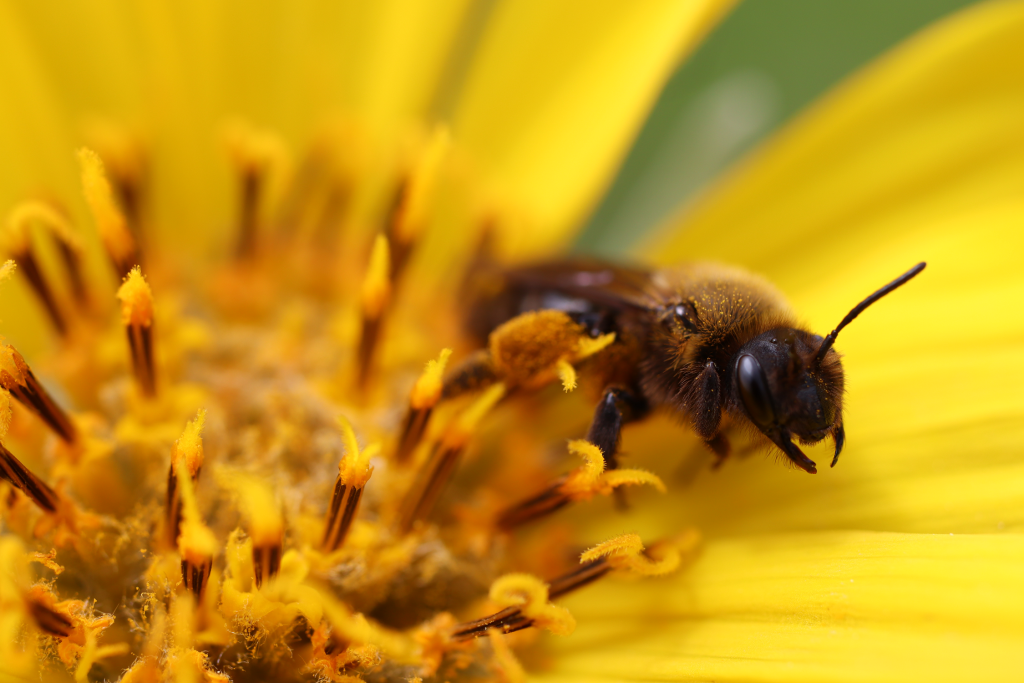Alberta Native Bee Council

Photo by Megan Evans
BY MEGAN EVANS
The Alberta Native Bee Council (ANBC) is a non-profit organization established in 2017 to promote the conservation of native pollinators through research, monitoring, advocacy, education, and community collaboration. ANBC was the first organization of its kind in Canada: focused solely on native bee conservation and established in response to a lack of research, monitoring, and resources on native bees.
There are 321 native bee species on record in Alberta, almost twice as many species as all of the fish, amphibian, reptile, and mammal species combined. However, far more efforts focus on the monitoring and conservation of the latter species, to the extent that the provincial government’s Wild Species Status Report no longer reports on the status of invertebrates as of 2015. The federal government provides species status reports that include bees and other invertebrates, but these reports are not the result of any coordinated or strategic monitoring, instead, they are informed by the best estimates of researchers and experts in the field.
How are our native bees doing? A little more than half of our native bee species are secure or apparently secure, approximately a quarter are data deficient, and another quarter are rare or declining. It’s not clear why some species are declining while others are not, but factors that can negatively impact all bees include habitat loss, pesticides, diseases, and climate change.
ANBC also promotes awareness of the differences between native bees and managed bees, like the European honey bee. Did you know that honey bees are not native to North America? Honey bees were brought to Canada by European settlers. Currently, Alberta is home to 40% of Canada’s honey bees, which are used for crop pollination and honey production. Honey bees are managed under the Alberta Bee Act, which requires beekeepers to report annually on the status of their hives. An important distinction is that honey bees, an introduced species, are managed by beekeepers and are categorized as livestock, while native bees are wildlife and are therefore of conservation concern.
ANBC has been busy during our first five years of operations. To address the deficiencies mentioned above, we implemented a provincewide monitoring program in 2018 to inform a comprehensive inventory and baseline of native bees in Alberta. Additionally, ANBC has created a citizen science bumble bee box monitoring program, developed a module for best practices for conservation of native bees for the Environmental Farm Plan, continued and completed research assessing the density and abundance of bumble bees in Waterton Lakes National Park, and given almost 100 presentations reaching thousands of people across Alberta.
How can you support native bee conservation? Create bee habitat by planting native flowers and incorporating diversity into your landscaping by leaving small patches of bare soil, old logs and stumps, piles of branches, and hollow stems. Reduce or eliminate pesticide use. Visit albertanativebeecouncil.ca, become an ANBC member, support the ANBC by purchasing merchandise from our online store, and follow us on social media to be notified of ANBC events near you!
Megan Evans is a co-founder and President of the Alberta Native Bee Council.
This article originally ran in Nature Alberta Magazine - Winter 2023.
